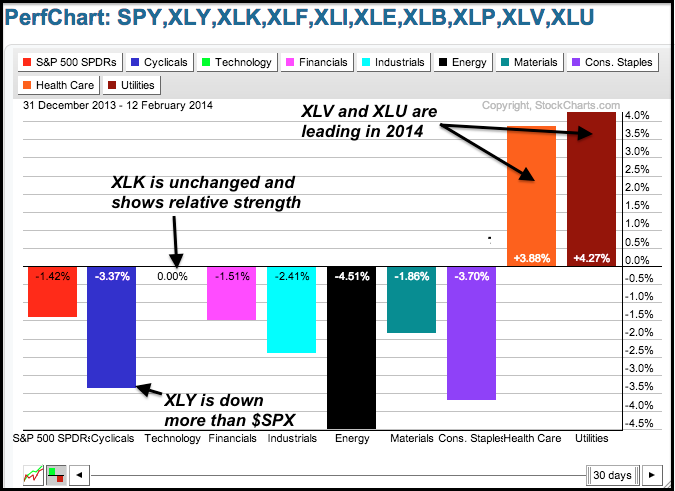Stocks turned a bit mixed on Wednesday. The Dow Diamonds (DIA) edged lower, while the Russell 2000 ETF (IWM) edged higher. The price movements in the sector SPDRs were quite small. Tech stocks were strong again as the Semiconductor SPDR (XSD) surged 1.77% to lead the way and record a new high. The large-cap end of the market continues to perform well, but the small-cap end continues to lag, as does the Consumer Discretionary SPDR (XLY). The PerfChart below shows year-to-date performance for the nine sector SPDRs. Notice that XLY is down more than twice as much as the S&P 500. The HealthCare SPDR (XLV) and the Utilities SPDR (XLU) are the top performing sectors this year, which suggests that the market has been rather defensive in 2014.
**This chart analysis is for educational purposes only, and should not
be construed as a recommendation to buy, sell or sell-short said securities**
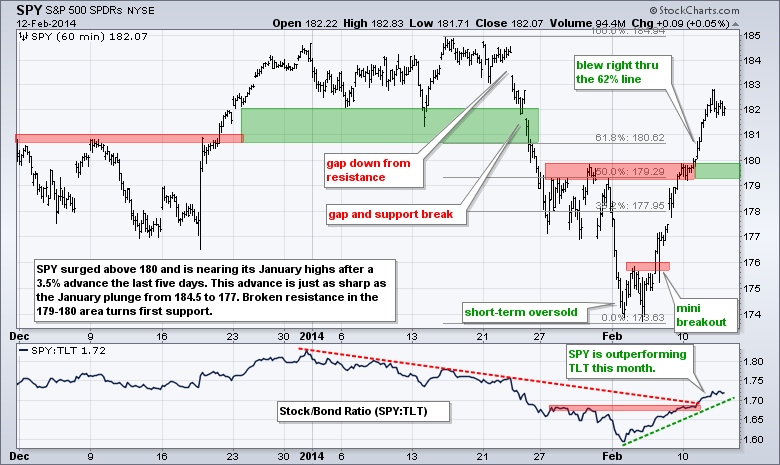


**************************************************************
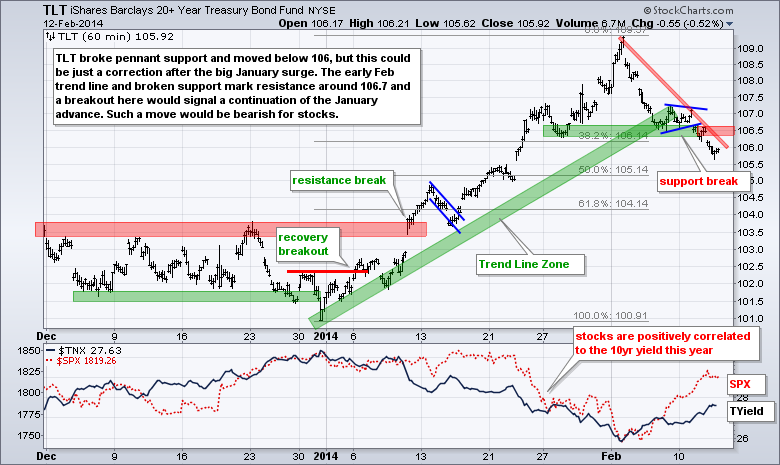
**************************************************************

**************************************************************
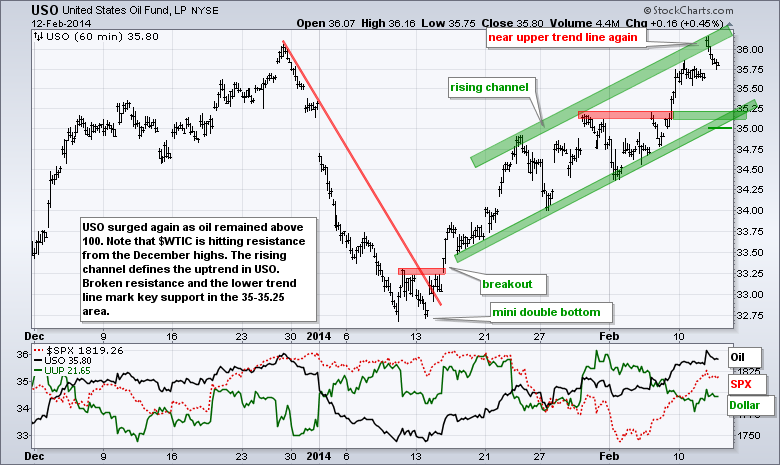
**************************************************************
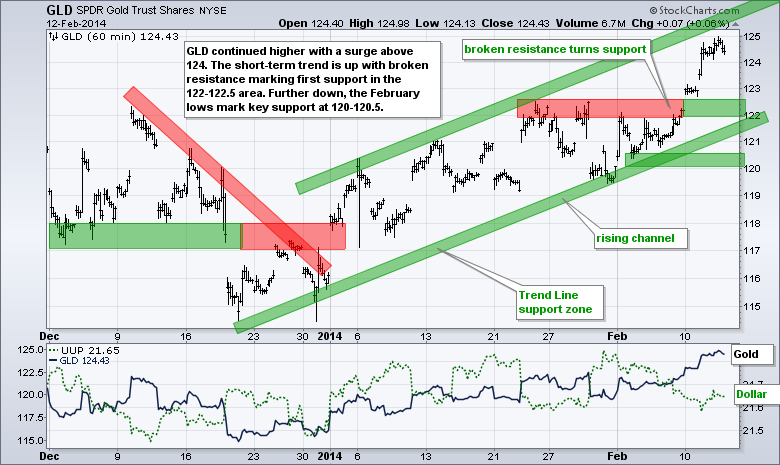
***************************************************************
Key Reports and Events (all times Eastern):
Thu - Feb 13 - 08:30 - Initial Claims
Thu - Feb 13 - 08:30 - Retail Sales
Thu - Feb 13 - 10:30 - Natural Gas Inventories
Thu - Feb 13 - 10:30 - Yellen Testifies
Fri - Feb 14 - 09:15 - Industrial Production
Fri - Feb 14 - 09:55 - Michigan Sentiment
Charts of Interest: Tuesday and Thursday
This commentary and charts-of-interest are designed to stimulate thinking. This analysis is
not a recommendation to buy, sell, hold or sell short any security (stock ETF or otherwise).
We all need to think for ourselves when it comes to trading our own accounts. First, it is
the only way to really learn. Second, we are the only ones responsible for our decisions.
Think of these charts as food for further analysis. Before making a trade, it is important
to have a plan. Plan the trade and trade the plan. Among other things, this includes setting
a trigger level, a target area and a stop-loss level. It is also important to plan for three
possible price movements: advance, decline or sideways. Have a plan for all three scenarios
BEFORE making the trade. Consider possible holding times. And finally, look at overall market
conditions and sector/industry performance.

